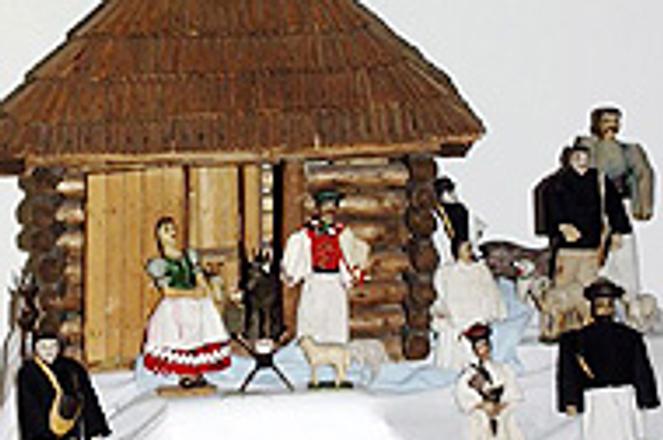ARTISTIC depictions of Christ's birth vary greatly.photo: Courtesy of SNM
THE SNM-HISTORICAL Museum is putting on an exhibition of nativity scenes in Bratislava Castle from now until the end of February. The exhibition, called Peace to People of Good Will, comprises 40 Slovak nativity scenes tracing the development of the nativity scene in Slovakia from early medieval times to the present day.
Many of these works survive thanks to local museum and gallery staff that, during the Communist era, kept these works in their depositories without hope of exhibition.
In Slovakia, nativity scenes first appeared in early medieval times, but their history goes back much further.
The first known depiction of the miracle birth was by St Francis of Assisi (1182-1226), using live animals, three years before he died. The custom then spread across Europe. Mangers were built in churches and monasteries, later becoming part of medieval church activities, where local believers re-enacted the birth of their Lord.
The next step in the development of nativity scenes was in the late-Gothic period. Wing-altars with the central theme of Jesus' birth or the Adoration of the Magi were built.
The Baroque period saw the introduction of large nativity scenes - engrossing depictions with many life-size figures. Gradually people wanted to have a nativity scene in their home, which meant smaller ones started to appear. Craftsmen, amateur artists, partly trained woodcarvers, self-taught peasants, and miners created these folk works.
FORTY vivid works are at the Bratislava Castle.photo: Courtesy of SNM
Nativity scenes started to appear in Slovak churches and monasteries in early medieval times. The most famous of these is the 16th century work by Master Pavol of Levoča.
At the end of the 18th century, the authorities of the monarchy ordered the removal of the depiction of the holy scene from churches. However, rather than wiping them out, this just encouraged craftsmen to build them secretly, causing a boom that lasted into the first decades of the 20th century.
The Slovak nativity scenes were mainly made of wood, sometimes paper. They varied a lot. The most beautiful and largest are from Central Slovakia, from the towns of Banská Bystrica, Banská Štiavnica and Kremnica. They are famous for their many carved, painted figures and rich decorations.
The first half of the 20th century incorporated new patterns and materials into the depiction of the nativity scene. But the arrival of communism led to the exclusion of religion and sacral art from everyday life, creating a gap in the tradition from the 1950s to the late 1980s.
The fall of Communism in 1989 led to a revival in the building of nativity scenes. The historical artefacts started to make it back into churches and galleries and new works were created: some following traditional forms and materials, others presenting new, innovative approaches.
The works in the exhibition at Bratislava Castle come from all over Slovakia, and date from the beginning of the 18th to the end of the 20th century. Two of the exhibited works are from the Czech Republic and one is on loan from the Museum of Carpathian German Culture.
Apart from the historical, mainly wooden works, the exhibition also presents contemporary nativity scenes made of ceramics, straw and wire.
Documentaries on the history of nativity scenes in Slovakia are also being shown as part of the exhibition.
Author: Magdaléna Mrázová


